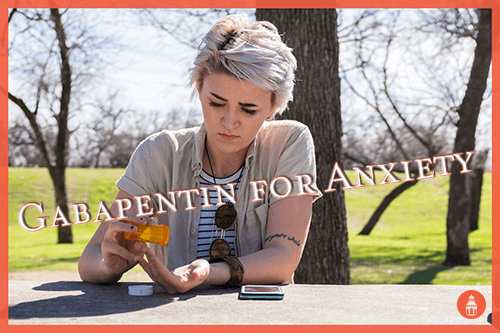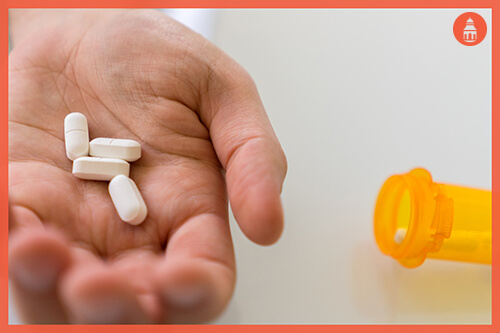The drug gabapentin is perhaps best recognized by the brand name Neurontin, but numerous generic versions of gabapentin exist. Gabapentin was developed to be an approximate synthetic version of the neurotransmitter GABA or gamma-aminobutyric acid.
GABA is the most prevalent inhibitory neurotransmitter in the brain and spinal cord (the central nervous system). Its effects are to slow down the firing rates of other neurons. Gabapentin use results in effects that are very similar to this primary neurotransmitter, but it does not have the exact same mechanism of action as GABA. Gabapentin is not a controlled substance and not covered under the listings of schedules of controlled drugs maintained by the Drug Enforcement Administration (DEA), but one must have a prescription in order to get it legally.
The Food and Drug Administration (FDA) has approved the use of gabapentin:

Gabapentin is quite popular with physicians for numerous off-label uses. It is considered to be relatively safe to administer (has few side effects and few dangerous interactions with other drugs). Because it mimics the actions of the inhibitory neurotransmitter GABA, it can be used in many situations where other medicines that could potentially have serious side effects might present a potential issue; for example, benzodiazepines might not the best course of action due to their highly addictive nature.
The dosages used when administering gabapentin can be variable depending on the age of the patient. Children and the elderly respond to lower doses of the drug and may also experience side effects at higher doses. It is a common practice for physicians to increase the dosage of a drug when a patient develops a low level of tolerance or when the drug is not working, but there is a ceiling effect to the gabapentin’s effectiveness for treating pain, and it is not effective at extremely high doses (over 1800 mg). Thus, continually upping the dose of gabapentin for the treatment of pain has its limits, and people who have serious issues with chronic pain may need to have additional medications prescribed along with gabapentin.
Off-label uses of gabapentin often require larger doses than approved uses of the drug require. Some of the more common off-label uses of gabapentin include:
- Treatment for pain management
- Treatment for restless leg syndrome
- Assisting individuals who are in recovery from abuse of several different types of drugs or alcohol, as gabapentin is sometimes used to control withdrawal symptoms from alcohol, benzodiazepines (for seizure control), opiates, and cannabis as well as to reduce cravings, anxiety, some of the physical symptoms of withdrawal, and issues with cognition
Some scattered research suggests that it may be useful in the treatment of anxiety that occurs in psychiatric disorders like bipolar disorder or schizophrenia, and it could be useful for anxiety disorders.
Gabapentin for Anxiety

Initially, gabapentin was used to treat anxiety that occurs in bipolar disorder or schizophrenia but not used in the treatment of the specific symptoms of these disorders. Over time, gabapentin was believed to have some anxiolytic properties (anxiety-reducing properties). It has been used as an additional medicine or even a frontline treatment in some cases for anxiety disorders by some physicians; however, at the time of this writing, it is not formally approved for treating anxiety or anxiety disorders.
There have been numerous research studies that have investigated the hypothesis that gabapentin may be useful in the treatment of anxiety. A 1998 review published in the American Journal of Psychiatry reviewed several case studies and concluded that gabapentin may be useful as an additive medication for people with anxiety disorders or as a standalone treatment for certain anxiety disorders, typically for panic disorder and generalized anxiety disorder. However, case studies do not provide sufficient empirical evidence for the use of any medication, but they can encourage further research.
Several follow-up research studies included one study that looked at gabapentin’s utility in treating social phobia and panic disorder. Gabapentin performed better than a placebo, but worse than standard treatments for social phobia. It was not more efficacious than placebo for panic disorder symptoms, except for very severe symptoms. It was not as effective for panic disorder compared to standard treatments (benzodiazepines and/or selective serotonin reuptake inhibitors).
More recent research looking at the utility of gabapentin for treating anxiety disorders is mixed at best, and there is little clinical evidence to substantiate its use.
As mentioned above, the research does indicate that it may be useful in treating issues with anxiety that occur in other types of disorders (e.g., bipolar disorder or schizophrenia) but may not be useful in treating the severe type of anxiety that occurs in anxiety disorders.
However, if the drug is not as effective in treating anxiety disorders as standard treatments, these benefits have little clinical utility.
In cases where gabapentin demonstrated some effect in treating anxiety, the effects of gabapentin apparently take a week or more to present, if it results in any anxiety reduction at all. In some cases, the effects may not be apparent until a month after the person is taking gabapentin. Doses used in these studies were relatively high (up to 3600 mg per day).
Research continues to investigate its effectiveness in the treatment of anxiety, and as mentioned in the above initial studies, it appears that gabapentin is not as effective as standard treatments for anxiety disorders. Gabapentin may have more utility as an adjunctive medication to assist standard treatments or to treat the lower-level anxiety that occurs in other types of disorders than it does as a standalone treatment for addressing the severe anxiety that occurs in anxiety disorders.
Research continues to investigate its effectiveness in the treatment of anxiety, and as mentioned in the above initial studies, it appears that gabapentin is not as effective as standard treatments for anxiety disorders.
Abuse of Gabapentin
The stance of the DEA is that gabapentin is not a significant drug of abuse and does not have a significant capability to produce physical dependence. Similar drugs to gabapentin, such as pregabalin (brand name Lyrica), are classified as controlled substances; Lyrica is classified as Schedule V. Research evidence has indicated that there are some isolated reports of individuals abusing gabapentin; however, these appear to be rather extreme cases.
For instance, in 2004 a journal article was published that described the abuse of gabapentin by prison inmates, all of whom had pre-existing substance use disorders and were grinding gabapentin tablets and snorting the powder. The self-reports of the prisoners indicated that there was some evidence of psychoactive (euphoric) effects from the drug. However, prisoners with substance use disorders often try numerous methods, many ineffective and unconventional to say the least, in order to get high.
In 2012, there is a reference to rising numbers of individuals abusing gabapentin in the United Kingdom that was reported in the British Journal of General Practice. A report from this article suggested that the psychoactive effects from gabapentin abuse were similar to the psychoactive effects of cannabis products. Another study published in 2014 in the European Addiction Research Journal indicated that about one-fifth of methadone abusers serving as participants in the study reported that gabapentin was used to enhance the effects of their methadone.
The Substance Abuse and Mental Health Services Administration (SAMHSA) reports that as an overall estimate, 80 percent of people with prescriptions for medications do not abuse them. The actual figures of misuse vary from medication to medication with prescription opiate drugs, benzodiazepines, and some sedatives having higher rates of misuse. However, it is clear from the research that the majority of people who are prescribed medications do not abuse them, even if they do develop some level of physical dependence on them as a result of using them for medicinal reasons.
The risk of a person abusing a prescription medication increases if the person’s use of the medication is not closely monitored by their physician. For instance, individuals now prescribed narcotic medications in the United States have difficulty legally obtaining more of the medication if they use their prescription up too quickly. Likewise, an individual abusing gabapentin who has a prescription for the medication would most likely use significantly more of the drug than prescribed, and physicians should recognize this and take steps to assist the person (e.g., discuss substance abuse with them, limit the amount of the drug they have access to, etc.). Thus, while any medication can be abused, gabapentin abuse is most likely not a major issue for individuals who are prescribed the drug, and individuals who have a prescription for the drug and abuse it should be relatively easy to recognize.
Unlike prescription opiate medications, gabapentin is not a drug that is in large demand by potential drug abusers. There is research evidence that use of high doses of gabapentin or very long-term use of the drug may produce a mild form of physical dependence. Withdrawal symptoms from gabapentin appear to be mild in the same way that withdrawal from antidepressant medications is relatively mild compared to withdrawal from other drugs.
Thus, even though there might be a chance for chronic abusers of gabapentin to develop dependence on the drug, it appears that the withdrawal syndrome associated with gabapentin is not potentially dangerous in most situations.
Conclusions
Gabapentin has numerous off label uses. Research investigating its utility in the treatment of anxiety indicates that at best, its effectiveness for the treatment of anxiety disorders is mild for most individuals. It is probably best used in conjunction with other treatments for anxiety.
Abuse of gabapentin is not widespread. Research literature indicates a few scattered accounts of abuse of the drug, mostly by individuals with psychiatric issues or pre-existing substance use disorder problems who are attempting to use the drug to enhance the effectiveness of other drugs or who cannot get their normal drug of abuse. Nonetheless, any medication can be abused by individuals, and someone using large amounts of gabapentin with or without a prescription should be suspected of abusing the drug.
It’s Never Too Late to Get Help
